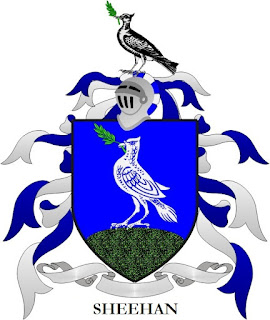By Grant Sheehan
Embracing Peace: The Legacy of the Sheehan Family
As I sit down to write this blog post, I am inspired by the deep-rooted values and meanings embedded in my family name, Sheehan. Originating from the Gaelic word "O'Síothcháin," which translates to "descendant of Síothcháin," my surname encapsulates a beautiful legacy of peace and tranquility. In a world often filled with conflict and noise, the concept of peace is more important than ever.
This blog post is not only a reflection on my family's heritage but also a heartfelt exploration of what peace means in today’s context. The Sheehan family has long been a symbol of harmony, and it is my hope to delve into this rich meaning and examine how we can carry forward the ideals of serenity and understanding in our lives and communities. Join me as we explore the significance of peace, both personally and universally, and how this legacy can inspire us to cultivate a more compassionate world.
As an example, The Many Faces of Peace
In discussions about war and conflict, the term "peace" is often tossed around as a universal goal. It conjures visions of tranquility, harmony, and resolution. However, the reality is far more complex. The ongoing conflict between Ukraine and Russia illustrates how the word "peace" can mean vastly different things to different parties involved.
When we hear leaders calling for peace in Ukraine, we assume we're all referring to the same idea. Yet, as we dig deeper, we discover a myriad of interpretations that shape the narrative of this war.
For Ukraine, peace represents a restoration of sovereignty and territorial integrity. The Ukrainian government seeks to reclaim territories occupied by Russia and reaffirm its borders as recognized by the international community. A sense of security is paramount; Ukrainians aspire to guarantees that future aggression will not threaten their sovereignty again. Political stability is also essential, as they aim for a government accountable to all citizens, free from external influence. Additionally, the road to peace is tied to rebuilding a devastated country—a clear recognition that recovery requires significant support for its infrastructure and economy.
On the flip side, Russia's concept of peace shares little resemblance to Ukraine's. For Russia, it may revolve around maintaining influence in the region, seeking recognition of its historical claims and interests in former Soviet territories. The idea of security is equally important, but it translates into demands for a halt to NATO's eastward expansion. Russia desires agreements that would ensure its own national security by limiting Western military presence near its borders. Furthermore, Moscow's vision of peace might include legitimization or at least autonomy for regions within Ukraine that lean towards Russia, such as Donetsk and Luhansk.
These contrasting definitions reveal how simplistic it is to talk about peace as if it's a one-size-fits-all solution. Each party's understanding of peace is shaped by historical grievances, national narratives, and strategic goals. This divergence complicates negotiations and creates barriers to compromise.
As we navigate discussions about peace in any context, it's crucial to recognize that when people use the term, they may be referring to fundamentally different ideas. To forge a path toward lasting peace, we must first engage in honest conversations about what peace means to each party involved. Only by acknowledging these differences can we hope to bridge the gap and find common ground.
In the case of Ukraine and Russia, the road to peace will be challenging and filled with complexities and nuances. However, understanding the varied meanings of "peace" is a critical first step in addressing this conflict and striving toward a resolution that respects the needs and aspirations of all parties involved. As we advocate for peace, let’s ensure we don’t lose sight of the diverse interpretations that shape our world.
@mythoughts
Grant Sheehan CEO
www.SheehansConsulting.com
305.951.3306
ceo@llcmiami.com
- Get link
- X
- Other Apps

Comments
Post a Comment
Please no profanity or political comments.